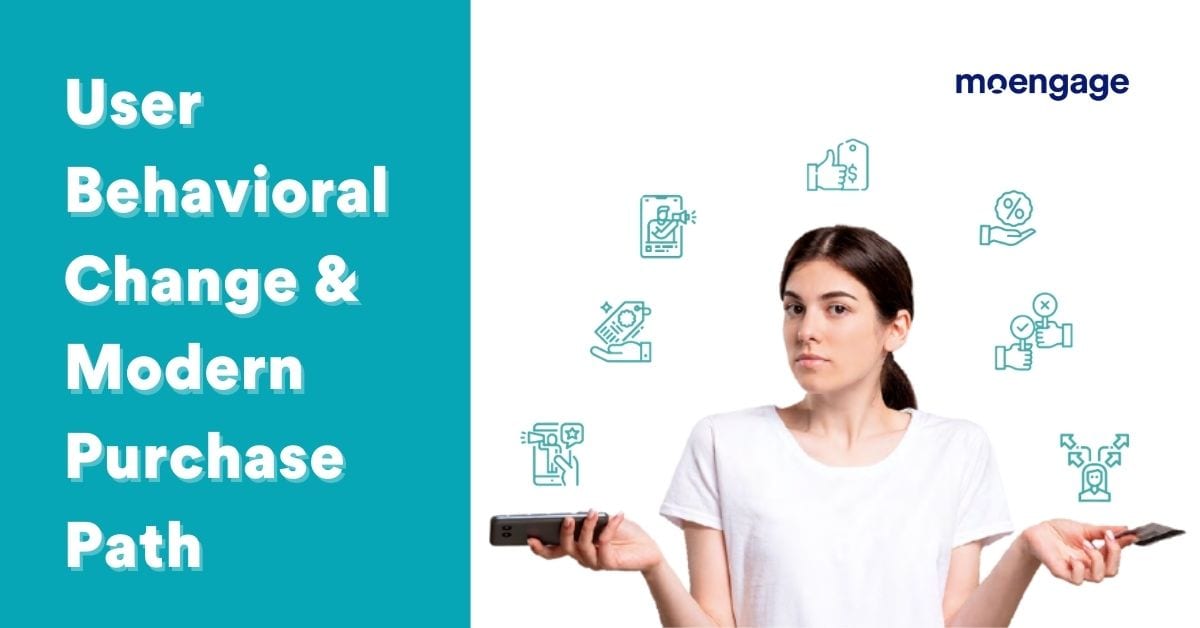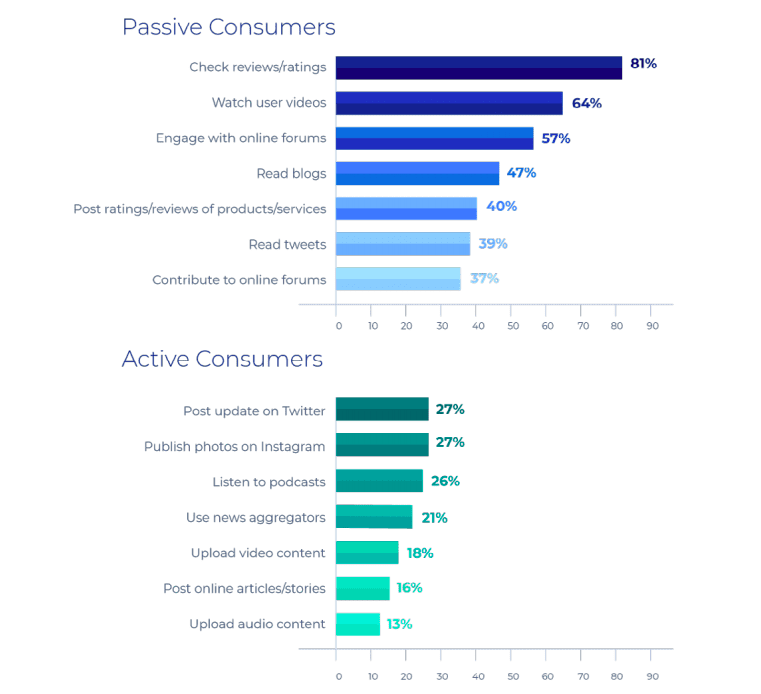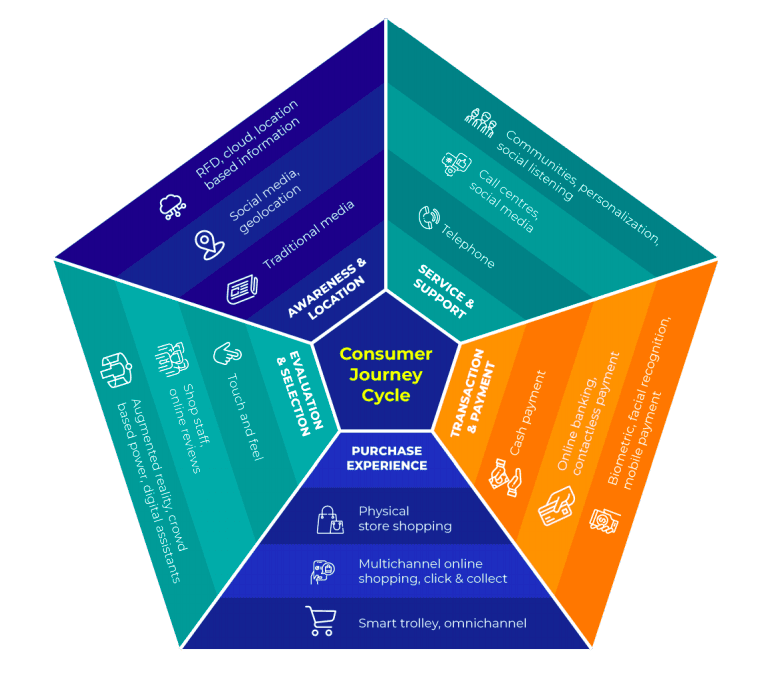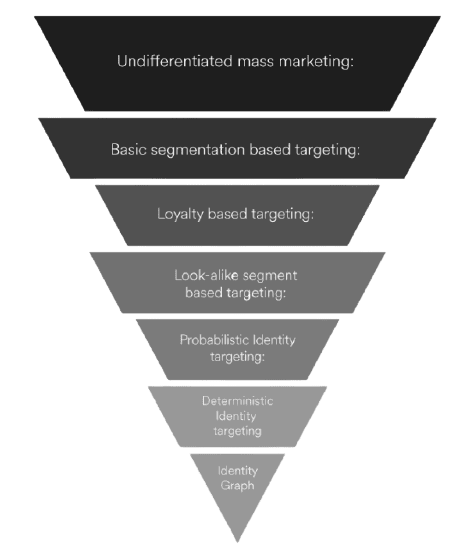User Behavioral Change and Evolution of Modern Purchase Path: 3 Key Lessons

Reading Time: 5 minutes
We live in a world where user behavioral changes and connected consumer experiences across multiple devices and channels dictate how products and services evolve. Quality of experience is effectively taking over price as the key differentiator between offerings. Hence, it is imperative for brands to adopt a customer-centric approach. Customer-centricity is the key to many growth strategies.
‘You’ve got to start with the customer experience and work back toward the technology, not the other way around.’
– Steve Jobs
Therefore, understanding and analyzing user behavior is the key to providing a personalized and relevant experience, which, in turn, increases conversion, retains existing users, and creates brand loyalists.
In an increasingly digital-first world, bolstered by social media networks, customers are driving when, where, and how they engage with brands. Customers have become the sculptors of their own experience in the truest sense of the word, demanding and expecting service, thereby shaping the product offerings they then consume.
Check out our two-volume, buyer’s guide for deeper insights and detailed information on how a customer engagement platform can help you map the perfect modern purchase path
The digital revolution has armed customers with an ever-expanding range of product and service choices and provided a platform to share their experience. Gone are the days of brands dictating and influencing customer expectations.
|
🎯 We are in a new era of skepticism and careful inspection of brand promises. 🎯 While option fatigue and the tyranny of choices have affected the decision-making process, price comparison engines coupled with voices of Key Opinion Leaders (KOLs) and influencers, are helping users make informed purchases. |
So, what are the key lessons from user behavioral change driving the modern purchase path?
The ever-widening gap between customer expectations and a brand’s ability to fulfill them is one of the biggest issues that contemporary marketers are aiming to resolve. In order to understand how customer expectations have altered, it is important to take note of changes in user activity and attitudes along with how they affect purchase decisions.
1
User activity and attitudes have changed in the world of connected consumer experiences

In essence, customers are actively pulling information (from reviews, ratings, social media chatter) rather than have brands push it to them (advertising channels).
|
🎯 This change in activity and attitude extends beyond the purchase phase and well into the post-purchase stage. 🎯 The same customers share their experiences, in turn influencing prospective buyers. 🎯 It is about time that brands shed their siloed approach to tackling different touchpoints and start consolidating user engagement across all channels through consistent communication. |
2
How user behavioral change morphed selection funnel to a cycle: Introducing the modern purchase path
The shift in power dynamics between customers and brands has reshaped the traditional purchase path. What was once a selection funnel has morphed into a cycle where customers have the choice to decide how they interact and engage with brands across several touchpoints. The modern purchase path, driven by technological advancement and multiple information sources, has taken products out of store shelves and put them inside the digital ecosystem, transcending geographical barriers to make transactions seamless and intuitive.

There has been a massive paradigm shift, one that has changed the customer-brand relationship from supply-driven to demand-driven with the former in the driver’s seat.
3
Evolution of engagement and targeted marketing powered by user behavioral change
While the omnichannel approach spanning multiple devices and driven by seamless customer experience offers huge scope to engage users, it comes with several challenges:
- Information gap: The customer profile is often limited to an ID or a transaction with limited information about preference and device type.
- Lack of cohesion between online and offline avatars: Mapping the offline customer identity to the online one can be particularly difficult due to silos, lack of continuous data flow, and loss or leakage of data across vendors.
- Broken continuity among customer profiles: Owing to cross-channel interaction across multiple devices, identifying and mapping the various profiles of a single customer becomes difficult, leading to loss of continuity.
- Running guesswork-based campaigns: While cookies provide basic information such as device type, they seldom provide anything in-depth to frame a targeted engagement campaign. This leads to the creation of generic campaigns which end up failing to engage unique prospects/customers.
- Engagement loss owing to device or platform change: As customer device or platform preferences change over time, there is a risk of losing engagement data built on older devices/ platforms.
A 360-degree customer view enabled by a powerful Customer Engagement Platform can eliminate the pain points listed above.
Here’s a look at how customer engagement and targeted marketing have changed, primarily driven by development in data analytics and segmentation:

Here’s how the marketer’s evolution through customer identity management in different phases:
- Undifferentiated mass marketing: Generic marketing in the absence of clear customer identity. Highly generic marketing driven by a lack of understanding of the individual user. Witnessed in unorganized segments or brands.
- Basic segmentation-based targeting: Demographics, viz. socio-economic, sex, age, profession, or psychographic level segmentation.
- Loyalty-based targeting: Differentiated marketing based on STP (Segmentation, Targeting, Positioning). Recognition based on loyalty card logins with no control outside the brand.
- Look-alike segment-based targeting: Look-alike buyer segment based on cookie recognition and tracking at the device level.
- Probabilistic Identity targeting: Personalization based on loyalty and niche. Identities uncovered using IP-based device matching (faces issues with shared IPs)
- Deterministic Identity targeting: Provides hyper-personalization. Targeting based on cross-device identity matching.
- Identity Graph: Driven by cross-device/platform/channel match of individual users.
Here’s What You Can Do Next
|







